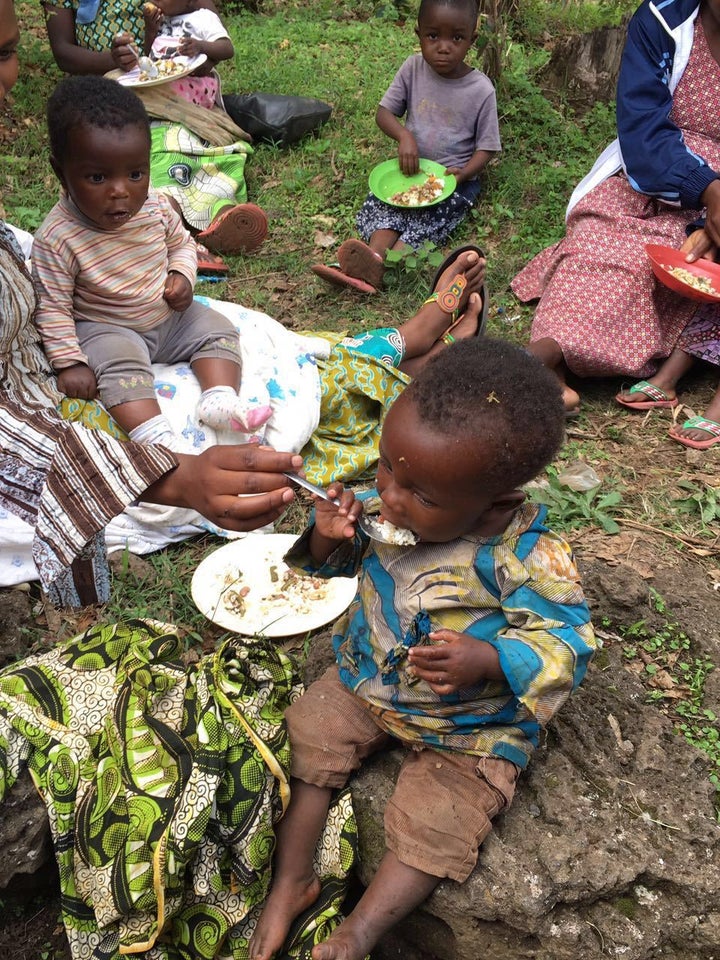
By: Dr. Stanley Zlotkin, Dr. Judy Mclean and Claudia Schauer
This year marks the 20-year anniversary of the invention of Micronutrient Powders (MNP). Since developing MNP, or ‘Sprinkles’, at The Hospital for Sick Children (SickKids) in Toronto, and after 10 years of research, we have seen more than 62 countries manufacture and distribute MNP to over 10 million children. MNP contain vitamins and minerals, including zinc, iron and vitamin A, typically lacking in young children’s diets in low and middle-income countries, yet essential for healthy nutrition. MNP are sprinkled into foods by caregivers in a process known as ‘home fortification’.
Although ten million children are getting the nourishment they need, there are millions more who are not. According to UNICEF, 40% of preschool children are estimated to be anaemic, an estimated 250 million preschool children are vitamin A deficient and iodine deficiency remains one of the main causes of impaired cognitive development in children. It is for these reasons and more that the nutrition community is coming together next week at the Micronutrient Forum in Cancun Mexico to discuss ways to tackle micronutrient (mineral and vitamin) deficiencies.
Fortunately, there is hope. A group of us from the SickKids Centre for Global Child Health, the University of British Columbia, and the Home Fortification Technical Advisory Committee (HF-TAG) visited Rwanda earlier this month as guests of UNICEF Rwanda to observe first-hand how Rwanda has developed a successful sub-national home fortification program with MNP, locally known as ‘Ongera’. The coverage rate is close to 90% in 19 districts where it is being distributed.
Along with the incredible welcome that we received from the community, we observed five distinct factors that contributed to the successful MNP program:
- Strong Leadership: At all levels, from the Ministry of Health to the volunteer ‘community health workers’, these leaders are the champions of the program and clearly believe that home fortification with MNP will improve the health of young children in Rwanda and possibly reduce rates of stunting, which remain high at 38%. Since the genocide in 1994, improving the health and lives of children has been a top priority in Rwanda.
- Accountability: Goal setting, report-backs and extensive measurements are all part of the Rwandan health and development system. At all levels, those responsible for the home fortification program and for estimating the number of children who will benefit are held accountable for their projections. Importantly, everything is counted and measured. In the villages, community health workers weigh and measure all young children in their catchment area monthly from birth to two years of age. They also distribute and annotate who receives Ongera. These values are written by hand, transcribed using ‘rapid SMS’ via cell phones and tabulated centrally on a daily and monthly basis. The system is truly impressive!
- Thoughtful and Active Planning: Acting on the advice of consultants from the University of British Columbia, UNICEF and the government of Rwanda introduced MNP in a four-stage process: feasibility, acceptability, pilot phase and scale-up. The feasibility phase included formative work on the feasibility of implementing a home fortification program using focus groups and key informant interviews with mothers, grandmothers, fathers, and healthcare workers in two districts. The cultural context, food availability, and local capacity was evaluated to guide operational components of the program. To assess acceptability, a 30-day trial of Ongera in 60 households in two districts was completed. Questionnaires during the trial assessed complementary feeding practices and knowledge and acceptance of Ongera. The third phase integrated important findings from the first two phases to refine training materials and come up with a distribution, monitoring, and evaluation strategy that was piloted over 12-months in six districts. Significant improvement in anaemia was documented, perceived improvements in appetite and activity level were reported and most importantly, family and community members were supportive of Ongera with 99% stating that they would continue giving Ongera to their child. Since the scale-up began in November 2014, an estimated 575,000 caregivers in 19 districts have been trained on the appropriate use of Ongera and received Ongera for their children.
- Integrated Partnership Development: Recognizing that at the start of the program, Rwanda did not have the technical infrastructure to scale-up MNP on its own, it invited NGO partners to work within the health system to facilitate the delivery of MNP in 17 of the 19 districts. A partnership council meets on a regular basis to share experiences, challenges and successes.
- Logistics: Rwanda has a sophisticated electronic logistics system for the stocking and delivery of drugs to health centres and district hospitals. By including MNP in this system, the likelihood of having supplies of Ongera available to community health workers when and as they are needed is high. Central supply facilities in Kigali are responsible for ordering supplies from the UNICEF distribution centre in Copenhagen, district hospitals order supplies from Kigali and local health facilities order and pick-up supplies from district hospitals. It is a logistics system that works!
During our final meeting with the Minister of State in Charge of Public Health and Primary Healthcare, Dr. Patrick Ndimubanzi, we were asked what more Rwanda could do to strengthen the distribution of Ongera. We answered that Rwanda has 11 districts that do not have a home fortification program. Now that it has the infrastructure in place (trainers, logistics and proof of principle), why not reach all the children in Rwanda. He responded – “Let’s figure out how to do it!”
Perhaps it is not surprising that the one country in Africa that saw its maternal, newborn and child survival rates dramatically improve over the past 15 years is leading the way on the implementation of home fortification. This country has made amazing progress in improving the lives of infants, children and families, despite relentless poverty. But as the Minister said, “In Rwanda we have poverty with pride - we care.”
About the authors:
Dr. Judy Mclean is a Senior Instructor, International Nutrition at the University of British Columbia.
Claudia Schauer is the Secretariat Coordinator and Technical Support for the Home Fortification Technical Advisory Group (HF-TAG), based at the SickKids Centre for Global Child Health.
Dr. Stanley Zlotkin is the Chief of SickKids Centre for Global Child Health and the inventor of Micronutrient Powders (MNP), known as Sprinkles.
